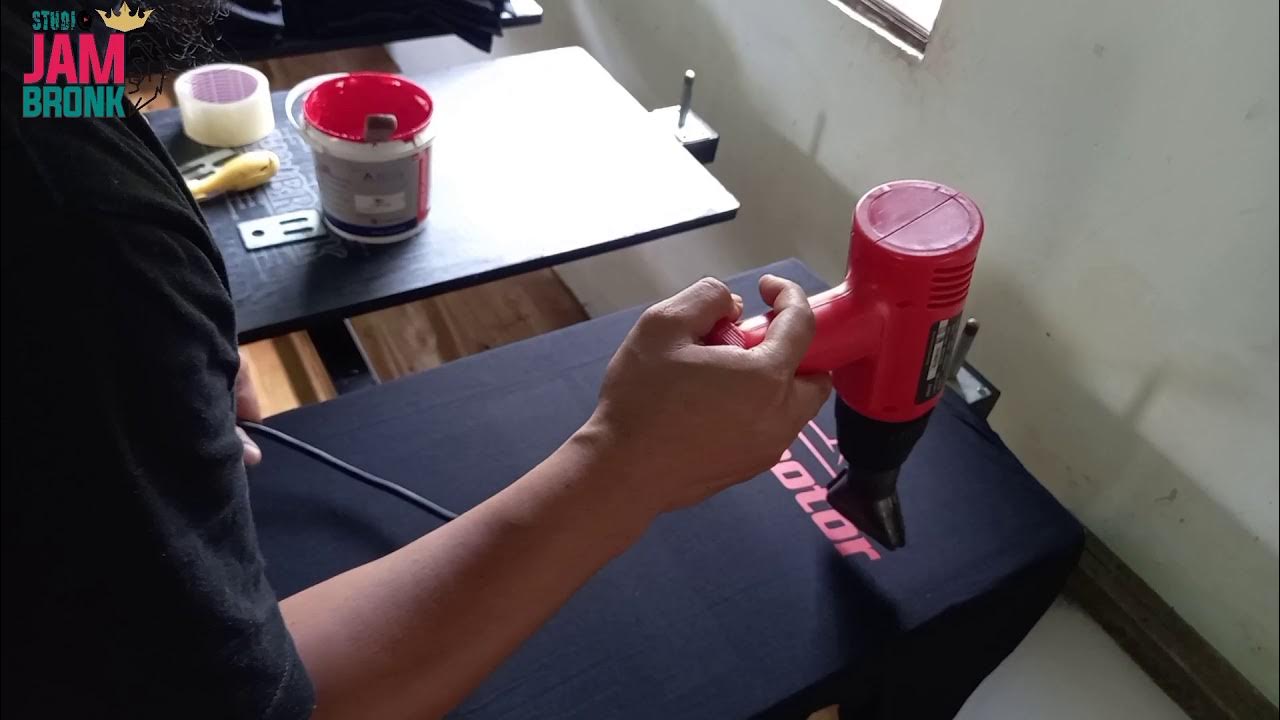Ultimate Screen Printing Guide: Screen Creation Techniques
Summary
TLDRThis video tutorial provides a comprehensive, step-by-step guide on creating a screen for screen printing. It covers essential materials and techniques, from preparing the frame and attaching the mesh to applying photo emulsion and exposing the design. Viewers will learn how to ensure their screen is taut, how to dry it effectively, and how to rinse away unexposed emulsion to reveal their design. The tutorial emphasizes attention to detail, ensuring a high-quality screen suitable for various printing projects. Perfect for both beginners and seasoned pros, this video is a valuable resource for anyone looking to enhance their screen printing skills.
Takeaways
- 😀 Screen printing is a versatile method for applying designs to various materials.
- 🛠️ Gather essential materials: frame, mesh, staple gun, scissors, adhesive tape, photo emulsion, squeegee, transparency with design, and a light source.
- 🔧 Choose a clean wooden or aluminum frame for optimal screen quality.
- 📏 Ensure the screen mesh is taut when attaching it to the frame for better results.
- 🖌️ Apply photo emulsion evenly on both sides of the screen in a dimly lit area.
- ⏳ Allow the screen to dry completely in a dark, cool place before exposure.
- 💡 Properly position the transparency design in the center of the screen before exposing it to light.
- 🚿 Rinse the screen gently to remove unhardened emulsion, revealing the design.
- 🔍 Inspect the screen for imperfections and fix any holes or areas with tape or additional emulsion.
- ✅ Follow these steps to create a high-quality screen for your screen printing projects.
Q & A
What is screen printing?
-Screen printing is a versatile method for printing designs on various materials, including fabrics and paper.
What materials do you need to create a screen for screen printing?
-You will need a wooden or aluminum frame, screen mesh, a staple gun, scissors, adhesive tape, photo emulsion, a squeegee, a transparency with your design, and a light source for exposure.
Why is it important to prepare the frame properly?
-A clean and smooth frame is essential for a good quality screen, as debris can affect the printing process.
How should the mesh be attached to the frame?
-Lay the mesh over the frame with extra mesh around the edges, apply glue, and use a staple gun to staple the mesh tightly, ensuring it is taut.
What is photo emulsion and why is it used?
-Photo emulsion is a light-sensitive coating that allows for the transfer of designs onto the screen, making it a crucial part of the screen preparation process.
Why should the screen be dried in a dimly lit area?
-Drying the screen in a dimly lit area prevents the emulsion from prematurely hardening due to exposure to light.
What is the purpose of exposing the screen?
-Exposing the screen hardens the emulsion in areas not blocked by your design, allowing the design to be transferred effectively.
How do you rinse the screen after exposure?
-Use a gentle stream of water to wash away the unhardened emulsion, revealing your design as the emulsion rinses away.
What should you do if there are imperfections in the screen?
-Inspect the screen for any holes or imperfections, and use tape or additional emulsion to fix these areas.
What can viewers do to stay updated on textile insights?
-Viewers are encouraged to like, share, and subscribe to the channel for more information on textile-related topics.
Outlines

This section is available to paid users only. Please upgrade to access this part.
Upgrade NowMindmap

This section is available to paid users only. Please upgrade to access this part.
Upgrade NowKeywords

This section is available to paid users only. Please upgrade to access this part.
Upgrade NowHighlights

This section is available to paid users only. Please upgrade to access this part.
Upgrade NowTranscripts

This section is available to paid users only. Please upgrade to access this part.
Upgrade NowBrowse More Related Video

SABLON KAOS MANUAL PRAKTIS DARI AWAL HINGGA AKHIR DIJAMIN BISA

How to Burn Your Own Screens from Home: Screen Print Tutorial

CARA SABLON PLASTISOL | CARA SABLON KAOS MANUAL | CARA SABLON KAOS MANUAL MEMAKAI TINTA PLASTISOL

How to Screen Record with Internal Audio on QuickTime Player

KEGIATAN P5 PERAKTEK MENYABLON | pkbm bina warga

📗 Qué es la SERIGRAFIA y COMO SE LLEVA A CABO - DICCIONARIO de Diseño Gráfico Trino
5.0 / 5 (0 votes)